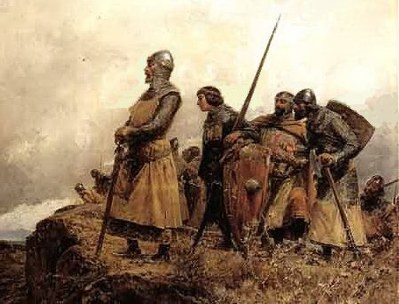
Orders of Chivalry
When A Knight Won His Spurs
When a knight won his spurs in the stories of old
He was gentle and brave he was gallant and bold
With a shield on his arm and a lance in his hand
For God and for valour he rode through the land
No charger have I and no sword by my side
Yet still to adventure and battle I ride
Though back into storyland giants have fled
And the knights are no more and the dragons are dead
So let faith be my shield and let hope be my steed
Against the dragons of anger the ogres of greed
And let me set free with the sword of my youth
From the castle of darkness the power of the truth (www.blythpower.co.uk
/lyrics/Alnwick/knight.htm)
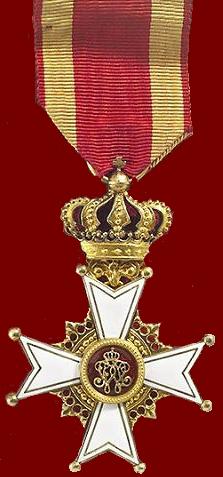
There is an article entitled “Chivalry and Modern Times” elaborates on what it means to be a true knight in our day and age that may be of real interest.
Click on any of the following sections that may interest you:
To Help Protect and Safeguard True Knighthood / Sovereignty and Orders of Chivalry / How to Become a Member of a Legitimate Order / Secular State Orders and Orders of Chivalry /
To Help Protect and Safeguard True Knighthood
Unfortunately, we live in a time of counterfeits. There must be at least 100 self-styled or phony orders of knighthood on the Internet masquerading as real and authentic, yet they have no legitimacy as genuine orders of chivalry. With so many false orders, it become imperative that an organization be established to identify the true orders to protect the public and the honor and good name of what is valid and true. The International Commission on Orders of Chivalry (ICOC) was officially established for this important purpose many many years ago. We salute this organization, which plays an important role in identifying and registering true orders.

The International Commission on Orders of Chivalry (ICOC) has approved the following orders based upon rightful sovereignty and sound principles. We highly recommend that you visit their website at www.icocregister.org and become acquainted with this reputable and important organization. It is now headed by Dr. Pier Felice degli Uberti.
A. INDEPENDENT ORDERS
- The Sovereign Military Order of Saint John of Jerusalem, called of Rhodes, called of Malta
B. SEMI-INDEPENDENT ORDERS
- Alcantara (formerly San Julian del Pereiro incorporated with Alcantara 1222)
- Calatrava
- Santiago
- The Teutonic Order of Saint Mary of Jerusalem
- The Bailiwick of Utrecht of the Teutonic Order in the Netherlands
- Montesa (united in 1400 with Saint George d’Alfamo founded 1201)
- Bailiwick of Brandenburg of the Knightly Order of Saint John in Prussia
- The Most Venerable Order of the Hospital of Saint John of Jerusalem
- The Equestrian Order of the Holy Sepulchre of Jerusalem
- The Knightly Order of Saint John in the Netherlands
- The Knightly Order of Saint John in Sweden
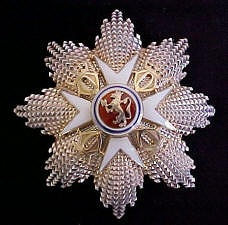
C. DYNASTIC ORDERS
- ALBANIA: House of Zogu (Islamic) Two Dynastic Orders
- AUSTRIA: House of Hapsburg-Lorraine (Lothringen) (Catholic) Two Dynastic Orders
- BRAZIL: House of Orléans-Bragança (Catholic) Two Dynastic Orders
- BULGARIA: House of Saxe-Coburg and Gotha (Orthodox) Three Dynastic Orders
- FRANCE: House of Bourbon (Catholic) Three Dynastic Orders
- GERMANY:
Anhalt – House of Ascania (Evangelical) One Dynastic Order
Baden – House of Zähringen (Evangelical) One Dynastic Order
Bavaria – House of Wittelsbach (Catholic) Three Dynastic Orders
Brunswick – Brunswick-Lüneburg (House of Hanover) (Evangelical) One Dynastic Order
Hanover – House of Guelph (Evangelical) Two Dynastic Orders
Hesse – House of Lorraine-Brabant (Reformed now Catholic) One Dynastic Order
Lippe – House of Lippe (Reformed) One Dynastic Order
Oldenburg – House of Oldenburg (Lutheran) One Dynastic Order
Prussia – House of Hohenzollern (Evangelical) Three Dynastic Orders
Hohenzollern – House of Hohenzollern-Sigmaringen (Catholic) One Dynastic Order
Reuss – House of Reuss (Lutheran) One Dynastic Orders
Saxony: Kingdom of Saxony– House of Wettin (Albertine Line) (Catholic) Three Dynastic Orders
Saxe-Weimar-Eisenach – House of Saxe-Weimar-Eisenach (Lutheran) One Dynastic Order
Saxon Duchies – House of Wettin (Ernestine Line: (1) Saxe-Meiningen, (2) Saxe-Coburg-Gotha and (3) Saxe-Altenburg) (Lutheran) One Dynastic Order
Schaumburg-Lippe – House of Lippe (Reformed) One Dynastic Order
Waldeck – House of Waldeck (Evangelical) One Dynastic Order
Württemberg – House of Württemberg (Catholic) Two Dynastic Orders - GREECE: House of Oldenburg (Greek Orthodox) Four Dynastic Orders
- ITALY:
Kingdom of Italy – House of Savoy (Catholic) Three Dynastic Orders
Parma – House of Bourbon-Parma (Catholic) Two Dynastic Orders
Tuscany – House of Habsburg-Lorraine (Catholic) Two Dynastic Orders
Two Sicilies – House of Bourbon-Two Sicilies (Catholic) Two Dynastic Orders
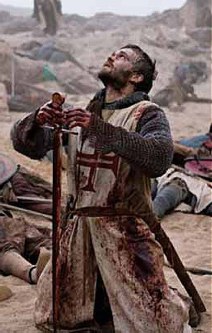
- JUGOSLAVIA/SERBIA: House Karadjordjevic (Orthodox) Five Dynastic Orders
- MONTENEGRO: House of Petrovic-Njegos (Orthodox)
Three Dynastic Orders
- MONTENEGRO: House of Petrovic-Njegos (Orthodox)
- PORTUGAL: House of Bragança (Catholic) Two Dynastic Orders
- RUMANIA: House of Hohenzollern-Sigmaringen (Rumanian Orthodox) Three Dynastic Orders
- RUSSIA: House of Romanov-Holstein-Gottorp (Orthodox) Eight Dynastic Orders
D. OTHER INSTITUTIONS OF CHIVALRIC CHARACTER
Ancient chivalric institutions, originally founded as orders, subsequently revived by the dynastic successor of the founding authority.
- PORTUGAL: House of Bragança (Catholic) One Institution of Chivalric Character
New chivalric institutions founded by the head of a formerly reigning dynasty.
- GEORGIA: House of Bragation (Orthodox) One Dynastic Order
- ITALY: House of Savoy (Catholic) One Dynastic Order
- RUSSIA: House of Romanov-Holstein-Gottorp (Orthodox) Two Dynastic Orders
Successors of chivalric institutions originally founded under the authority of a State.
- HUNGARY: One Institution of Chivalric Character
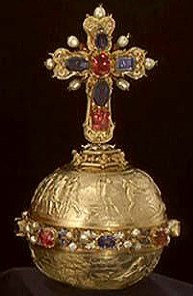
There is a lot more important information on each of these orders, on their history, principles and membership on the website of The International Commission on Orders of Chivalry (ICOC). For information on each of these orders, please see their website at www.icocregister.org. Also, we feel it is a great honor that on February 9,2007, His Eminence Cardinal Pio Laghi, Patron Cardinal of Sovereign Military Hospitaller Order of St John of Jerusalem of Rhodes and of Malta, Prefect emeritus of the Congregation for Catholic Education (association of seminars and educational institutes) has accepted to become Patron of the International Commission for Orders of Chivalry (ICOC). (2009: http://nobilitynews.blogspot.com/2007/06/his-eminence-cardinal-pio-laghi-patron.html)
The ICOC also has a list of extinct orders, other approved chivalric institutions, noble corporations, and nobiliary bodies that are authentic or the real thing. Please be aware that there are a lot of counterfeits out there. (See the article called “The Self-Styled Orders” written by Guy Stair Sainty at www.chivalricorders.org/orders/self-styled/selfstyl.htm)
Sovereignty and Orders of Chivalry
The following is a quote from a conference of leading international scholars on Heraldry and Chivalry. They set out principles needed, in order to distinguish the true and genuine from the phony orders that are self-styled, dubious and lack legitimacy. They concluded:
Although, at one time — many centuries ago — private people of high standing could and did create some independent Orders of Knighthood, some among which came, in due course, to gain considerable prestige and obtained formal validity from . . . the Crown [or sovereign authority] . . . , [however] now-a-days, Orders of Chivalry . . . must always stem from or be . . . under the protection of Chiefs of Houses of recognised sovereign rank. (International Commission for Orders of Chivalry, Register of Orders of Chivalry- Report of the International Commission for Orders of Chivalry (International Commission for Orders of Chivalry/Gryfons Publishers and Distributors, USA, 1996, p. 5) (www.icocregister.org
/principles.htm)
In other words, with the rise of the nation-states, such orders and knighthoods, along with titles of nobility (in the case of monarchies), became the exclusive domain or right of sovereigns to reward. This is in full recognition that royal sovereignty, being the supreme pinnacle of secular authority on earth, which is above all others, has the independent and restricted power over the right of chivalric honors. (See: “Sovereignty & The Future of Nobility and Royalty,” “Dynastic Law” and “Sovereignty in the Holy Roman Empire”)
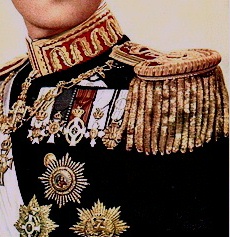
Noel Cox, LLB, LLM, Ph.D. professor of Constitutional Law, Auckland University of Technology and an expert jurist in this field, declared, “Supranational [international] organizations, unless [they] themselves [are] recognised as sovereign, cannot create Orders of Chivalry.” He also said, “. . . knighthood, as traditionally understood, can only be conferred by a Sovereign.” Hence, “Orders of Chivalry . . . [must be] under the protection of Chiefs or of Houses of recognised sovereign rank.” The conclusion is that, “Only de jure [legal] sovereigns . . . may create Orders of Chivalry.” Descendants who do not hold “de jure” sovereignty, have permanently lost the right to rule, therefore cannot create a genuine “Orders of Chivalry.” (See: “The sovereign authority for the creation of Orders of Chivalry” www.geocities.com/noelcox/Creation.htm)
In full concurrence, retired professor of law and international lawyer, Stephen Kerr, JD, former counsel to the Imperial and Royal House of Hapsburg, made it clear that “the validity or legitimacy of an order of chivalry depends upon its possession of a sovereign [not ecclesiastical, self-styled or made up] fons honorum. . . .” (See: “Dynastic Law”) A fons honorum is the perfect right to honor. A “sovereign” fons honorum means that right to honor is from a political or secular ruler, i.e. emperor, king or sovereign prince. We consider this to be self-evident and obvious, but it needs to be made crystal clear, as some get confused on this point, that the great honor of knighthood is the exclusive and unique domain or property of the sovereign nobility and royalty of the earth.
On orders founded by religions and by not monarchs, Guy Stair Sainty, a well-known expert in orders of chivalry, explained:

The Patriarchs [religious leaders] are not Sovereigns, or even claimants to Sovereignty, and therefore lack the authority to found or give their protection to Orders of Chivalry. . . . (http://stichtingargus.nl/vrijmetselarij/ridders/lazarus_sainty.html)
The point is, they just have no rightful authority to create or maintain orders of chivalry, because ecclesiastical authority does not have the right of sovereignty. (Except, of course, the Catholic Pope, who is, in addition to being an religious leader, a sovereign prince. The Vatican is an internationally recognized sovereign entity. The prince, the Pope, presides over an independent territory or nation-state — one of the smallest countries in the world. The Popes in ancient times were the Dukes of Rome and had other sovereign territories as well.) Commenting on ecclesiastic orders other than those under the Pope, the “International Commission on Orders of Chivalry” (ICOC) considers them to be imitations and not chivalric in nature. Yet they use chivalric terms. The ICOC then stated, “We invite these Authorities to use more proper terms for any future creations of awards.” The reason being that “. . . none of [them] . . . possess any type of direct Sovereignty. . . .” (www.icocregister.org/2007ICOCRegister.pdf) This is an important issue.
Christian theology recognizes a division between government sovereignty and religious rights. “Over every nation he [God] set a ruler” — a sovereign — a secular ruler. (Ecclesiastics 17:14) That is, “By me [by the power and authority of God] kings reign, and princes decree justice. By me [that is, by God] princes rule, and nobles, even all the judges of the earth.” (Proverbs 8:15-16) These kings, princes and nobles had sovereignty and it was given them by God. The people, including the religious leaders, were subordinate to them in government rule. This division is important to remember in regard to religious claims to the right of sovereignty, because sovereignty, by definition and meaning, is the domain of the political or secular authorities, not the domain of ecclesiastical authorities, whose domain does not involve sovereignty. For example in the days of the Kings of Israel, there was a king, who ruled, fought and lead the military; and a separate man, the high priest and/or prophets, who was the religious leaders, who were uninvolved with war and had nothing to do with the warriors or what some would call “knights” — David’s special legendary elite, the “Thirty” or “the mighty ones.” (1 Chronicles 11) That is, there was a division between sovereignty and religious leadership. Centuries later this division was still in force and it continues to this day. No wonder, the disciples of the Christ were taught to “Render . . . unto Caesar, the things which are Caesar’s [that is, honor his right to rule] and [render] to God the things that are God’s [the importance of living a good life].” (Matthew 22:21) Church leaders were told that both they and the people should submit themselves “to the king, as supreme . . . ,” that is, foremost and highest in rank.Therefore, Peter admonished his followers to “Honour [that is, obey, give deference to] the [secular] king” — he who held the right to rule. (1 Peter 2:13,17) “For there is no power but of God: the powers that be [the kings and princes of the earth] are ordained of God.” (Romans 13:1) Therefore, the apostle Paul also wrote, “Put them in mind to be subject to principalities [the sovereign rulers of these territories] and powers, to obey magistrates, to be ready to every good work.” (Titus 3:1) (See: “Monarchy and Nobility: Divine Rights & Responsibilities”) The obvious conclusion, which is only common sense, is that there is a separate and distinct governmental power that religious leaders do not possess.
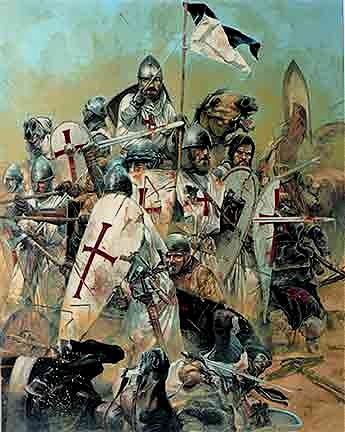
No matter what was temporarily done in the early Middle Ages in terms of knighthood and chivalry, everything has changed. All orders were put under the authority of the nobility by virtue of the supreme law of nations — the authority of sovereignty. It needs to be understood that this situation is now a matter of law. In other words, a major shift took place in international law from the beginning of the Christian Era to the middle of the seventeenth century “. . . on account of the international character . . . of the orders of chivalry reacted upon state [or sovereign] practice throughout Christian Europe.” (George Grafton Wilson and George Fox Tucker, International Law, Edition 5, 1910, p. 13) That is:
The great Orders of Chivalry were international institutions, whose members, having consecrated themselves a military priesthood, had no longer any country of their own, and could therefore be subject to no one save the Emperor and the Pope [who was considered to be an international sovereign at the time]. (James Bryce, The Holy Roman Empire, chapter XV, “The Empire As An International Power,” Part 15, 1901)
This is the era where the authority of sovereignty, the supreme right to rule, completely took over, and all knighthood became subject to the law of rulers. It is now a fact that for an order of chivalry to have any validity under international law, it must be offered by a sovereign state or by a reigning or “de jure” monarch.
Dr. Kerr, already quoted in this subchapter, a former law professor at Antioch School of Law and a published legal expert and scholar in this field, declared very succinctly that, “. . . certain objects which by their nature are not capable of ownership by private individuals [such as “orders of chivalry”] . . . may be owned only by international persons. . . .” (2009: www.mocterranordica.org/Dynastic_Law_.pdf) In other words:
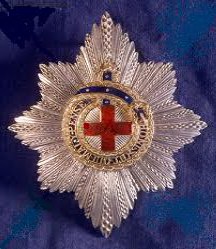
To be legitimate, an order of chivalry must have a fons honorum: A sovereign house, a State, or other international person [who has the supreme right to rule politically or governmentally]. Without such a sovereign fons honorum, the legitimacy of an order of chivalry lapses [that is, ends or terminates].
Similar to a public vessel, nuclear weapon, or the bed of a navigable river, no private person can own an order of chivalry. . . . Orders of chivalry are also objects of public international law and fall within the scope of international law in the same manner as do . . . public vessels and nuclear weapons.” (Ibid. and “Dynastic Law”)
Therefore, by law, an order not created or maintained by any authority other than by a living “de jure” or reigning imperial, royal or princely “sovereign” is either a social order, a brotherhood or merely a chivalric club. It is not a valid or legitimate order of chivalry. That is, if it is without a “sovereign” fountain of honor, which is a political or secular right, it is self-styled. Self-styled means, by definition, self-appointed or self-proclaimed. In other words, it is a false claim — made up or fabricated. Such are like the self-styled “doctor,” an impersonator, who has no degree of any kind and never went to medical school. Such a man or woman would be an imposter or counterfeiter mimicking that which is genuine and true. But the point is, unless a self-styled order of chivalry is very careful to specify that they are not real orders of chivalry, but are, in truth, only fraternal orders or clubs with chivalric ideals, they are presenting a falsehood, which is misleading and counter to international law. Willful misrepresentation of the truth is a lie and violates tort law, if not actual criminal law, in many countries.
The article “The Self-Styled Orders” written by Guy Stair Sainty gives a list of only a few of such orders, but it helps get an idea of that phony orders exist and are plentiful. They have no legitimacy being founded upon nothing and therefore have no validity. This right to honor in Latin is called Ius Honorum and only true and authentic sovereigns hold it: www.chivalricorders.org/orders/self-styled/selfstyl.htm. (See also the article: “Title of Nobility Scams” as well as “Fake Titles and Counterfiets”)
How to Become a Member of a Legitimate Order
We, of the International Commission on Nobility and Royalty (ICNR), applaud the fine work of the International Commission on Orders of Chivalry (ICOC). Their work is essential and critical to the future of what is true and genuine. Many people through the years have valiantly carried the voice of warning about those who are not what they claim to be, but the ICOC has organized a way of discerning very quickly by list authentic chivalric organizations.
It is believed that one of the reasons that people join phony orders of chivalry is because there are so many self-styled orders in existence, and because they do not know how to become a member of a true order. It seems self-evident that no one really wants to be a part of something that has no legitimacy—something false or counterfeit. But many good people end up doing this, even though many of these individuals are worthy in every way of something infinitely better.
Therefore, we have determined that, with the help of others, we will attempt to show how one can become a member of an authentic order. This will take time. It is a difficult venture, but worthwhile.
Remember that knighthood in its highest sense is both an honor as well as a responsibility. Knighthood, at its highest, is a form of a quest for greatness. It is a remote and heartless, if it only means sending a yearly check. Chivalry should be inseparably connected to such virtues as being courageous, brave, loyal, courteous and true. Many of the genuine and authentic orders are composed of people who have already accomplished great things for benefit and good of mankind. Becoming such a knight is one of the highest honors one can receive in this life. The rolls of knights obviously should not be filled by prominent businessmen, lawyers and politicians. It should be filled with the good hearted of all socioeconomic classes.
There are orders that are more open to new members than others and respect the goodness of the common man. They are equally valid orders and want men and women who desire to contribute their small share and are willing to do so for the rest of their lives. Though those contributions may seem relatively small, they add up to something truly great in the life of a man or a woman. In other words, some become knights by virtue of what they have already done in the past. Others can become knights by virtue of their determination to create a life worthy of true knighthood for the rest of their lives. (See: “Chivalry and Modern Times”)
For the truly worthy, we have taken upon ourselves the project of helping them find out how to become members of those orders which are open to new membership. Please contact us. (See also: “General Philosophy & Practices”)
Secular State Orders and
Orders of True Chivalry
An important distinction should be made between a true order of chivalry and a secular state order. The insignia of a state order often mimics or imitates the decorations of true orders conveying true knighthood, but has no ceremony, no oath of loyalty to high ideals, no bonds of brotherhood, no tradition of a quest, no call to fight evil, promote good, defend the helpless and the oppressed, in sum, nothing to commit one to a higher level of life and living before the source of all authority and power in the heavens. Secular orders are stripped of loyalty to king, nobility, heraldry, truth, and religious influence. In a nutshell, they have lost the ancient spirit and purpose of chivalry. In addition, a government as an entity in and of itself is not royal. It can’t be such. Therefore, it cannot be a fountain for royal or noble titles or knighthoods. Such is the limited and unique property right of royalty or sovereign princes. Hence, the International Commission on Nobility and Royalty does not support state orders as conferring valid and authentic knighthood. It is devoid of what makes a true and rightful fons honorum based on genuine royal sovereignty rather than republican sovereignty. (Information and ideas originally taken from Stephen P. Kerr, JD, “A Factual and Juridical Study of the Dynastic Orders and Awards of the Habsburg Monarchy,” The Augustan Society Omnibus Book, Issue 8, 1986, pp. 2-5)